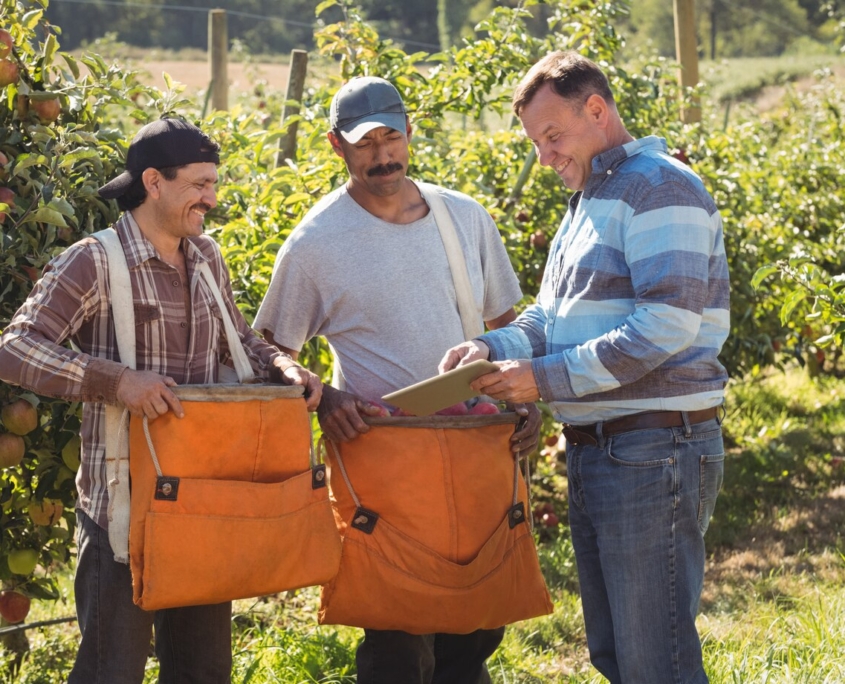As farm owners, we constantly strive to ensure that everything on our farm—crops, livestock, and team—is in good shape. Knowing that all is well allows us to sleep better at night. But getting a real pulse on the paddock’s status involves more than just a casual glance; it demands deep engagement with every facet of the operation. Conducting a thorough paddock inspection is crucial to understanding the true condition of your farm. While many farm owners rely on updates from their teams to stay informed, increasingly, technology plays a pivotal role. From apps that streamline data collection to cameras and other equipment that monitor field conditions, technology helps us keep a vigilant eye on all corners of the farm.
Yet, nothing can replace our own eyes. Being physically present on the farm lets us gather unique data, offering a clearer, more accurate view of the actual conditions. Despite the invaluable support from technology and our teams, direct observation uncovers nuances that remote tools cannot capture. However, this doesn’t mean you need to be in each paddock every day. At Enable Ag, we emphasise the importance of regular paddock inspections. This blog will guide you through conducting thorough inspections, also known as paddock walks or checks, to help you manage your farm effectively.
Phase 1: Before the Paddock Inspection

Plan and Prepare a Checklist
Start by reviewing notes from your previous visits to track progress and unresolved issues. Clearly define your objectives based on current farm priorities and equip yourself with the necessary tools—soil probes, record sheets, and a customised checklist. This checklist, simple and continuously updated, will guide your routine and help you stay organised and detailed during inspections.
Brief Team to Engage During the Paddock Inspection
Briefing your team for paddock inspections is essential, even if you’re leading the effort. Remember, this is a team task. So you have to outline the process clearly , specify their roles, and set clear expectations for the inspections. Highlight key areas that need special attention, such as specific crop rows or livestock health indicators. This ensures everyone is informed and prepared to contribute effectively, allowing your weekly checks to run smoothly.
Phase 2: During the Paddock Inspection

Use the Checklist
Always start with a detailed checklist to ensure no aspect is overlooked, which helps collect comprehensive data on crop conditions, livestock health, and overall farm status. Download and customise the checklist here.
Log Tasks on the Go & Delegate
As you walk through the farm, make sure to record all your observations and tasks quickly. If you are our client, use the offline task entry form to capture each task in less than 20 seconds. Otherwise, use your system in place or a pen and paper will do. Also, it’s crucial to delegate these tasks to your team immediately after the inspection to ensure nothing is overlooked or forgotten. Make a note of all observations – this is not the time to think, but do quick actions and note your observations
Interact & Train On the Spot
Use paddock inspections as opportunities for on-the-spot training and skill enhancement. Engage with your team during the inspection, encourage sharing observations, and provide immediate feedback or guidance. Apply techniques from “The 5 Love Languages“ and “The New One Minute Manager“ to align team efforts with the farm’s core values, boosting performance and ensuring roles support the farm’s objectives, fostering a supportive work environment.
Phase 3: After Each Paddock Inspection

Review and Analyse Data
Post-inspection, use the data collected to make informed decisions for the coming week, analysing it to identify repeated patterns and proactively plan any necessary steps. It is crucial to not only record your findings but to add more details, delegate or act on them effectively.
Meet with your Team
Organise a management and / or operations team meeting to discuss your paddock inspection report. Gather your team to review all tasks logged and plan next week. Adjust task schedules and resource allocations to ensure your farm operations are as efficient as possible.
To conduct these meetings effectively:
- If you are our client, watch our course on Management Meeting Structure.
- If you aren’t, you can learn how to structure meetings from the book Traction by Gino Wickman.
Follow-Up Actions & Update Checklist
After each paddock inspection, schedule both immediate and long-term actions based on your findings, and regularly update the paddock inspection checklist to add or remove any items, improving the process continuously.
Effective paddock inspections are crucial for maintaining farm health and efficiency. By integrating regular observations and tasks into a structured checklist, you ensure that nothing is overlooked. As farmers, while we enjoy the hands-on work, it’s equally important to take time to reflect and think strategically.
This balanced approach not only helps you align your actions with the long-term goals and best interests of your farm but also fosters a proactive management style that boosts overall productivity and sustainability. Remember, consistently integrating this practice into your routine is crucial, even during busy seasons. It’s vital to delegate where you can, staying focused on top priorities to keep your operations streamlined and effective. Download our detailed Paddock Inspection Checklist today and Book a Free Discovery Call with our consultant to see how we can help you further optimise your farm operations and transform strategic insights into actionable plans.
If you found this article helpful, share it with your network to help others unlock their farming potential. Don’t forget to like and follow us on social media for more insightful tips: Facebook, Instagram, and LinkedIn. Let’s empower more farmers together!

 Enable Ag
Enable Ag